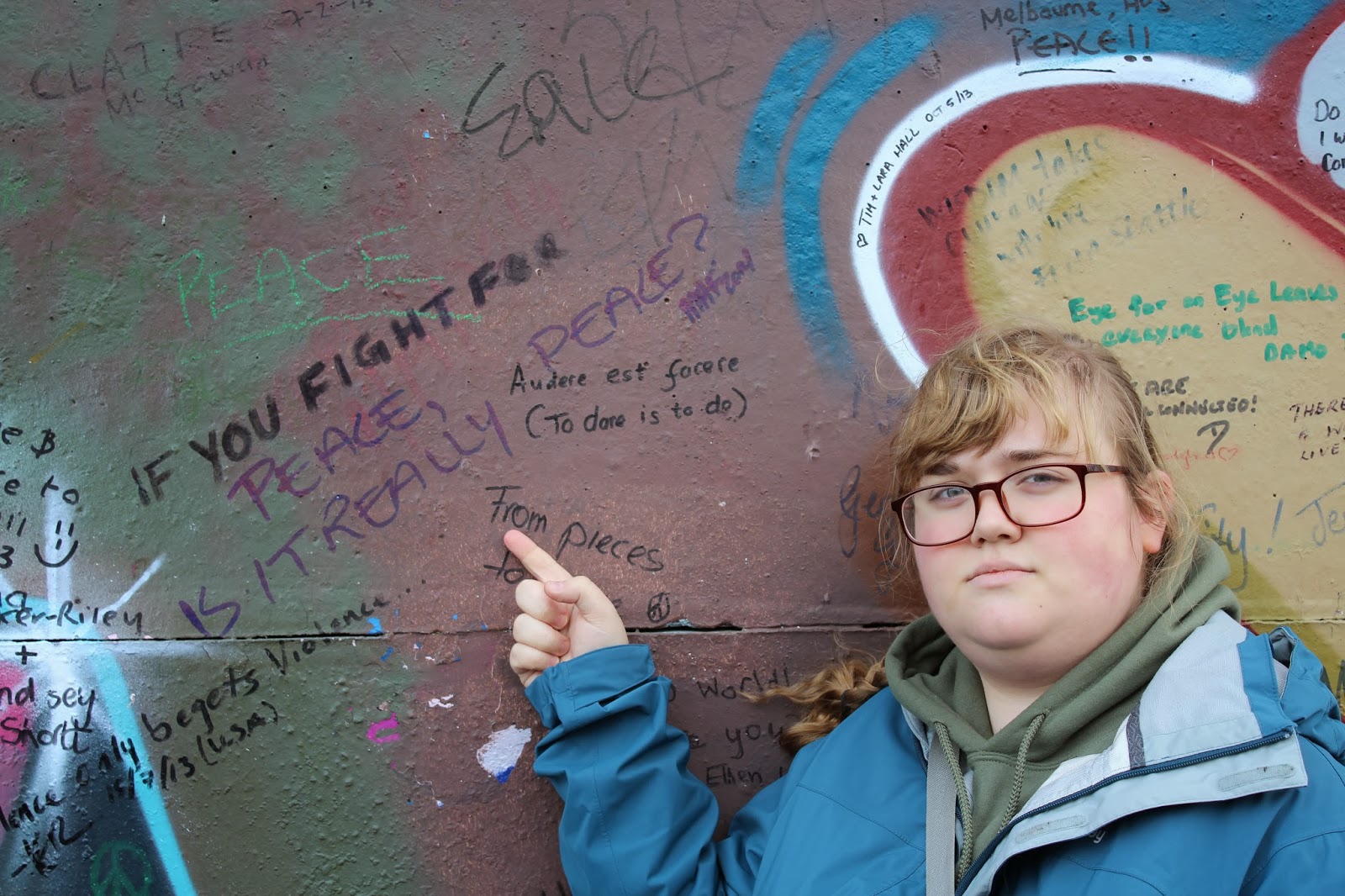Last Sunday, I went to Belfast with the UCD International Student Society (ISS). Two of my fellow masters students also came. We had an awesome bus driver - at least for us history buffs in the back. He gave us a full run down of the Irish-English conflict through present day. By the time we reached our first stop, we were thoroughly aware of what had occurred during the Troubles (the conflict in Northern Ireland from the 1960s - late 1990s).
 |
| Source: itsthereforareason.com |
Luckily, our first stop wasn't quite as emotionally heavy as our bus
ride. We started at the Titanic Experience. Built in 2012 to commemorate
the construction of the Titanic in Belfast, the building itself is a
work of art. Each pane of aluminum on the front is unique, signifying
the unique individuals who sailed on Titanic's fateful journey.
Inside, there is a compass inlaid with lines leading outside the building. You can follow them to trace the Titanic's voyage.
The upper walls are lined with the names of every ship that Harland and Wolff (the company that made the Titanic) ever made. Because of the angle, I was only able to get this picture, but there were hundreds of other names.
The museum is really cool and has all of these interactive features that tell you about Belfast as a world leading industrial city - making ships, linen, and cigarettes during the early 20th century. There is also a ride that takes you through the construction of the Titanic and what it would have been like for the builders.
Another cool thing was a virtual tour of the boat from top to bottom and another from the perspective of underwater archaeologists.
The Troubles and Shankill
Next, we went on a 'Black Cab' Tour - the name is misleading, none of us were in black cabs, but I digress. These cabs took us through Shankill, the area that was central to the Troubles and is still under conflict to a degree. One of the most significant features is the wall that separates the Catholic/Irish side from the Protestant/British side. It's sad, really, but our cabbie seemed to think that the area just wasn't ready for the wall to be dismantled. A portion of the wall is called the 'Peace Wall.' People from all over the world have written pleas for peace and loving messages. Now mine is among them.
The Shankill area is really sad. It looks like a prison camp, these run-down buildings separated by a 60ft wall. They have their own ways of 'brightening' it up though. Mainly through large murals like these:
 |
| William of Orange - his victory over the Catholic King James |
 |
| I actually don't know what this is, another British victory I assume. |
 |
| Commemorating a Ulster Volunteer Force (UVF) 'general' |
 |
| Cuchulain - a mythical Irish hero adopted by both sides of the conflict. |
Most of these murals are upsetting. I feel like they only add to the tensions in the neighborhoods. I mean do you really need to commemorate car bombings and century-old 'victories'? I don't know.
One of the most famous murals is the 'Mona Lisa of Belfast' called such because the sniper follows you no matter where you are
I don't know if you can really tell in the photos, but the gun really does follow you.
On a happier note, we also got some free time to walk around Belfast. One of the first things we saw was the Belfast City Hall. I don't know if all tour guides go the same school, but both the cabbie and our bus driver made jokes about it being their house.
It really is very opulent and you can tell that, at least when it was built, Belfast was a
very wealthy city.
And to leave it, my favorite sight:
 |
| 'Drink Feckin Responsibly, Take the Feckin Taxi...Feckin Irish Whiskey |
































